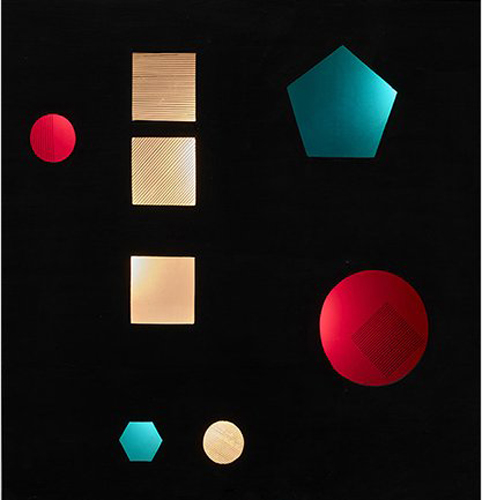
The Museo Reina Sofía presents a retrospective on Eusebio Sempere (Onil, Alicante, 1923–1985), one of the foremost figures in twentieth-century Spanish art who shared the platforms and ideas of Kinetic Art and whose work was set apart through its light- and colour-based poetics. “It’s an art that is simultaneously concrete, poetic, logical, and even urban”, was how art critic and essayist Vicente Aguilera Cerni described Sempere’s work. The exhibition brings together around 170 pieces, including watercolours, gouaches, luminous reliefs, collages, paintings, mobiles, sculptures and interdisciplinary projects, in addition to a documentary section on the period stretching from 1949 to the early 1980s.
The years Sempere spent in Paris in the 1950s marked a sharp turning point in his artistic career. In the French capital he participated in various editions of the Salon des Réalités Nouvelles, where, in the summer of 1955, he displayed his mobile luminous reliefs and a manifesto which referred to light as an element with which to build a poetic dialogue through time. The year these overtly kinetic works were exhibited coincided with the show Le movement, held at the Denise René Gallery and regarded as the origin of Op Art and Kinetic Art. Sempere’s progressive interest in avant-garde art in Spain and the difficulties he encountered in Paris led him to move to Madrid in January 1960, at the apex of Informalism. It was during that same year, as a member of the Grupo Parpalló, that he exhibited his work in the first joint exhibition of Spanish Normative Art, with the support of the aforementioned Aguilera Cerni. He also took part in the 30th Venice Biennale (1960), the 6th São Paulo Biennial (1961), and, in 1963, with a grant from the Ford Foundation, he headed to the USA to display his work in 1964 and 1966 at New York’s Bertha Schaefer Gallery. These years also saw him represented by the Juana Mordó Gallery, which held a retrospective of his work in 1965, while Fernando Zóbel included him in the unveiling of the Museo de Arte Abstracto Español in Cuenca in 1966.
This exhibition opens with a series of abstract watercolours which bear a relation to the work of Vassili Kandinsky and Paul Klee, before leading on to a broad selection of gouaches made in Paris — geometric works with understated lines and a high sensibility in terms of light and space — along with a selection of luminous reliefs he embarked upon in 1955.
The exhibition moves forward with a focus on the interests running through Sempere’s work after his return to Spain, shining a light on a selection of gouache paintings on board and paper, collages made with poster board, and metal sculptures, realised from the mid-1960s onwards. His interdisciplinary works are also displayed, for instance Proyecto de música electrónica (Electronic Music Project, 1967), made with Luis de Pablo’s ALEA group; the seminars Análisis y Generación Automática de Formas Plásticas (The Analysis and Automatic Generation of Plastic Forms), conducted in the Computing Centre at the Complutense University of Madrid between 1969 and 1972; the exhibitions Antes del Arte. Experiencias ópticas perceptivas estructurales (Before Art. Structural and Perceptive Optical Experiences), organised by Aguilera Cerni in Valencia and Madrid in 1968, and Proyecto IBM (IBM Project), put forward as a sculpture of total art, and in collaboration with Cristóbal Halffter and Julio Campal. (MNCARS press-release)
Museo Reina Sofía. Calle Santa Isabel, 52. 28012 Madrid
Imagen: Eusebio Sempere, Relieve luminoso móvil “Ciudad”. Madera, acrílico, plástico, lámparas y motor. Colección familia Muñoz Avia. Fotografía: Joaquín Cortés/Román Lores
